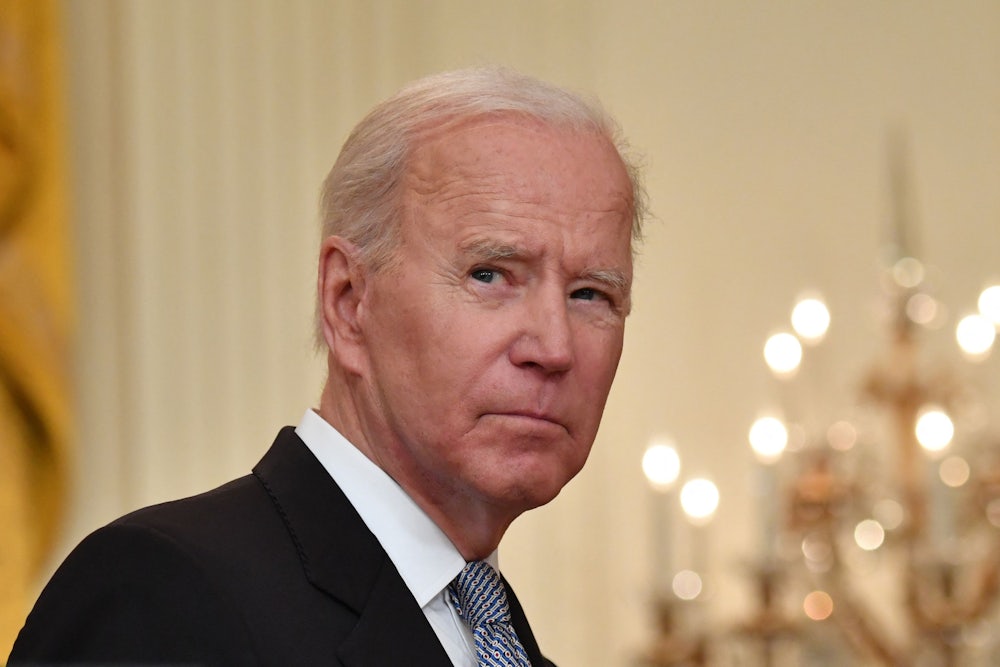Last year’s midterms gave Republicans a narrow majority in the House. That shift will effectively nix the rest of President Joe Biden’s legislative agenda and force the White House into political brawls with the House GOP over basic matters such as keeping the government open and raising the debt ceiling. For now, that new majority is forcing lawmakers to take vote after vote in a failed effort to elect Kevin McCarthy, the House GOP’s putative leader, as speaker. (The current count is 10 but it may be much higher by the time you read this.)
In the long term, however, the more significant consequence of the midterms may be found in the Senate. Democrats managed to expand their hold on the chamber with 51 votes, allowing them to take full control of committees after two years of divided membership. That majority remains intact despite Arizona Senator Kyrsten Sinema’s announcement last month that she would leave the party because she will continue to caucus with it in the majority. Senate Democrats can’t pass legislation on their own, because of the filibuster that too few among their ranks are willing to abolish. However, Democrats can do the next best thing: fill dozens of judicial vacancies.
There are currently 72 vacancies in federal district courts across the country. Judges in those courts hear civil and criminal trials and oversee the first stages of almost all federal lawsuits. A further ten vacancies are currently open on the federal circuit courts of appeal. Those courts, which review rulings and decisions by judges in lower courts, can be immensely influential in their own rights. Since the Supreme Court only takes up a handful of cases each year, the circuits often have the final word in most cases.
Democrats are all too familiar with the importance of judicial vacancies after the Trump administration. Former President Donald Trump failed to achieve most of his legislative goals during his tenure for various reasons, including opposition from members of his own party, fickle and ineffective leadership by the White House, and lack of public support. But the Trump White House and top Republican senators, led by then-Majority Leader Mitch McConnell still managed to transform the Senate into a judicial-confirmation factory.
During his four years in office, Trump and McConnell confirmed 226 federal judges to the bench. That amounted to just over a quarter of all serving federal judges by the time Trump left office in 2021. The former president’s success was even more remarkable because he only served one four-year term. Barack Obama, for example, saw 320 of his judicial nominees confirmed over the course of his eight-year presidency, with successful confirmations dropping off during his last two years in office after Republicans captured the Senate in 2014. George H.W. Bush, the most recent one-term president before Trump, had 187 judicial confirmations during his presidency.
Biden and Senate Democrats maintained a similarly speedy clip during their first two years in power. The Biden White House successfully shepherded 97 new federal judges through the Senate confirmation process by the end of the 117th Congress this month. That rate outpaced the Trump administration, which only confirmed 85 judges over the same period. The Biden administration also prioritized women and people of color as judicial nominees: The New York Times noted that he had successfully nominated more Black women to federal judgeships—eleven in total—than all previous presidents combined. With Republicans largely in lockstep opposition, Democrats also had to maintain total unity among their 50-member caucus to confirm many of the nominees.
Earlier in the summer of 2022, Senate Democrats bragged that they had confirmed more federal judges at that point than under any president since John F. Kennedy. “These judges will bring badly-needed diversity to the judiciary: not just demographic diversity, but also professional diversity, adding to the breadth and width and depth of knowledge possessed by the courts,” Senate Majority Leader Chuck Schumer, who has successfully maintained a low-key approach to judicial nominations, said in a statement in June. While some of Trump’s nominees also withdrew or were pressured to bow out under scrutiny, none of Biden’s formally nominated picks have done so.
The raw numbers only tell part of the story, however. While Biden has outpaced Trump in overall confirmations, a larger proportion of Biden’s nominees filled vacancies in the federal district courts. Trump’s greatest success came at filling vacancies at the appellate level, where judges can be far more influential in shaping the law. His 54 nominees helped shore up a hard-right majority on the Fifth Circuit Court of Appeals and flipped the Third, Ninth, and Eleventh Circuits from majority-Democratic appointees to majority-Republican appointees. (Naturally, these partisan labels can be an imperfect indicator of a nominee’s judicial views.)
But the Trump administration and its right-wing legal allies still touted each of those flips as a victory in the conservative legal movement’s campaign to reshape the courts in its own image. The Biden administration has also spent less time on jurisprudential purity than Trump did, with no outside figures playing the same role in the Biden White House that Federalist Society executive Leonard Leo did for the Trump White House. This is not to say that there is no “liberal legal movement,” but its incentives and goals are not readily comparable to its conservative counterpart. Nor is there a single theory of law comparable to originalism that is considered essential for each liberal nominee to believe in, for better or worse.
Biden’s aggressive pace may also be unsustainable. The rate of future judicial vacancies is hard to predict for reasons that are both human and actuarial. Only a particular judge knows when and whether they will retire. As it stands, however, Senate Democrats have only confirmed 28 appellate-court nominees and only seven further vacancies are currently outstanding. Since some judges time their retirements depending on which president holds the White House, Trump reaped an early bumper crop by replacing conservative judges who had waited out Obama’s eight-year tenure. A last-minute rush of liberal judicial retirements seems unlikely by comparison.
There is also one big reason why Biden’s imprint on the federal courts, though significant, will struggle to match Trump: the Supreme Court. The Biden administration successfully nominated Justice Ketanji Brown Jackson to the high court earlier this year to replace the outgoing Stephen Breyer, accomplishing a key liberal goal in securing that seat for the foreseeable future. But no further vacancy appears imminent from the other eight justices, including the court’s two remaining liberals, who have now served for more than a decade each. Trump, by comparison, took advantage of an unusually rapid succession of vacancies to confirm a third of the high court’s current members. Those victories far outweigh any of his successes in the lower courts.
Still, for a party that sat by and watched as Trump and McConnell remolded a broad swath of the federal courts in their preferred ideological image for the last four years, Democrats will still relish the ability to fill any judicial vacancies is a welcome one, especially if a surprise retirement occurs at the Supreme Court during that time. Biden and Schumer also likely know that these nominations will be among the most impactful choices they make in office. Thanks to the voters of Georgia and Pennsylvania, they have at least two more years to keep making them.










